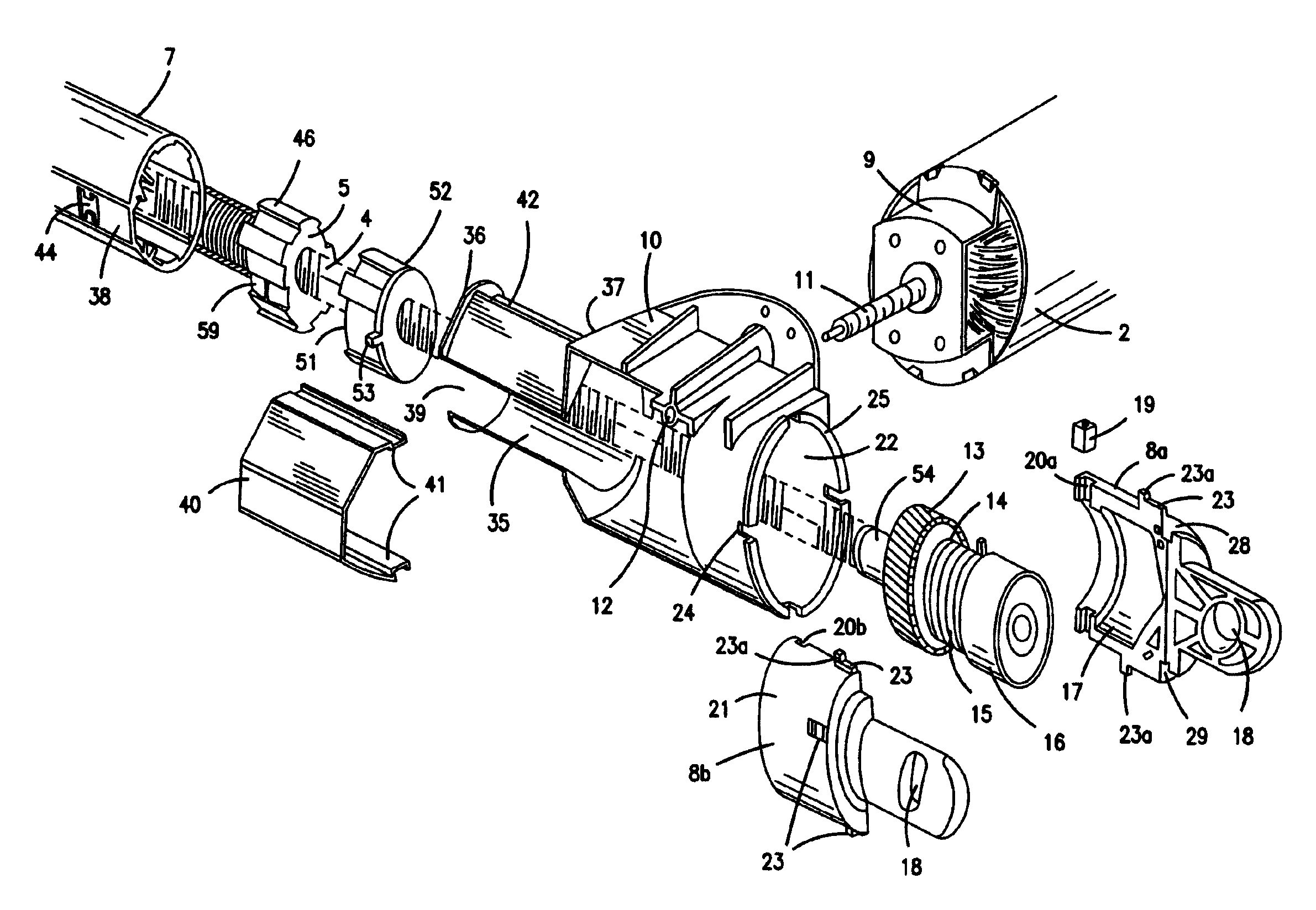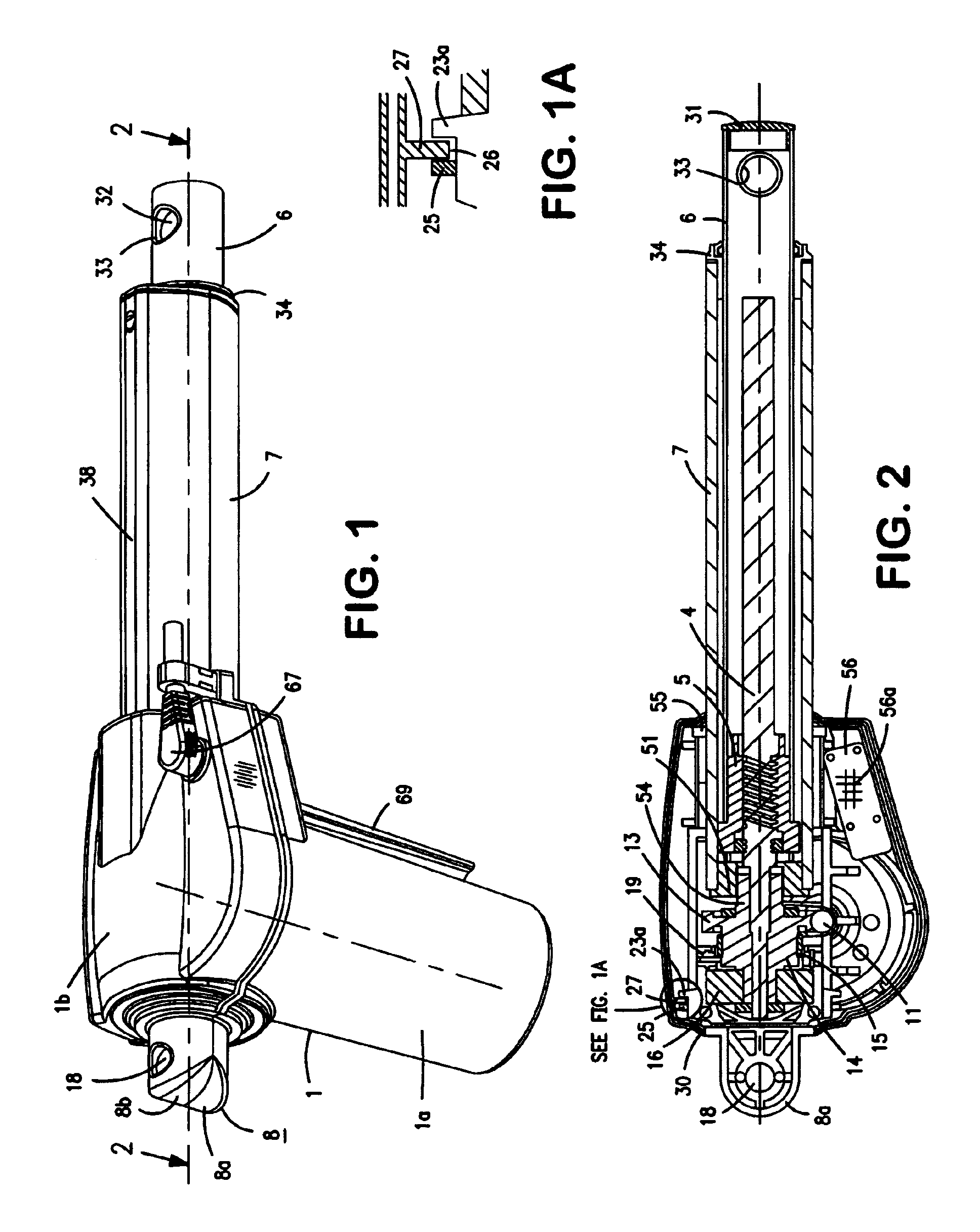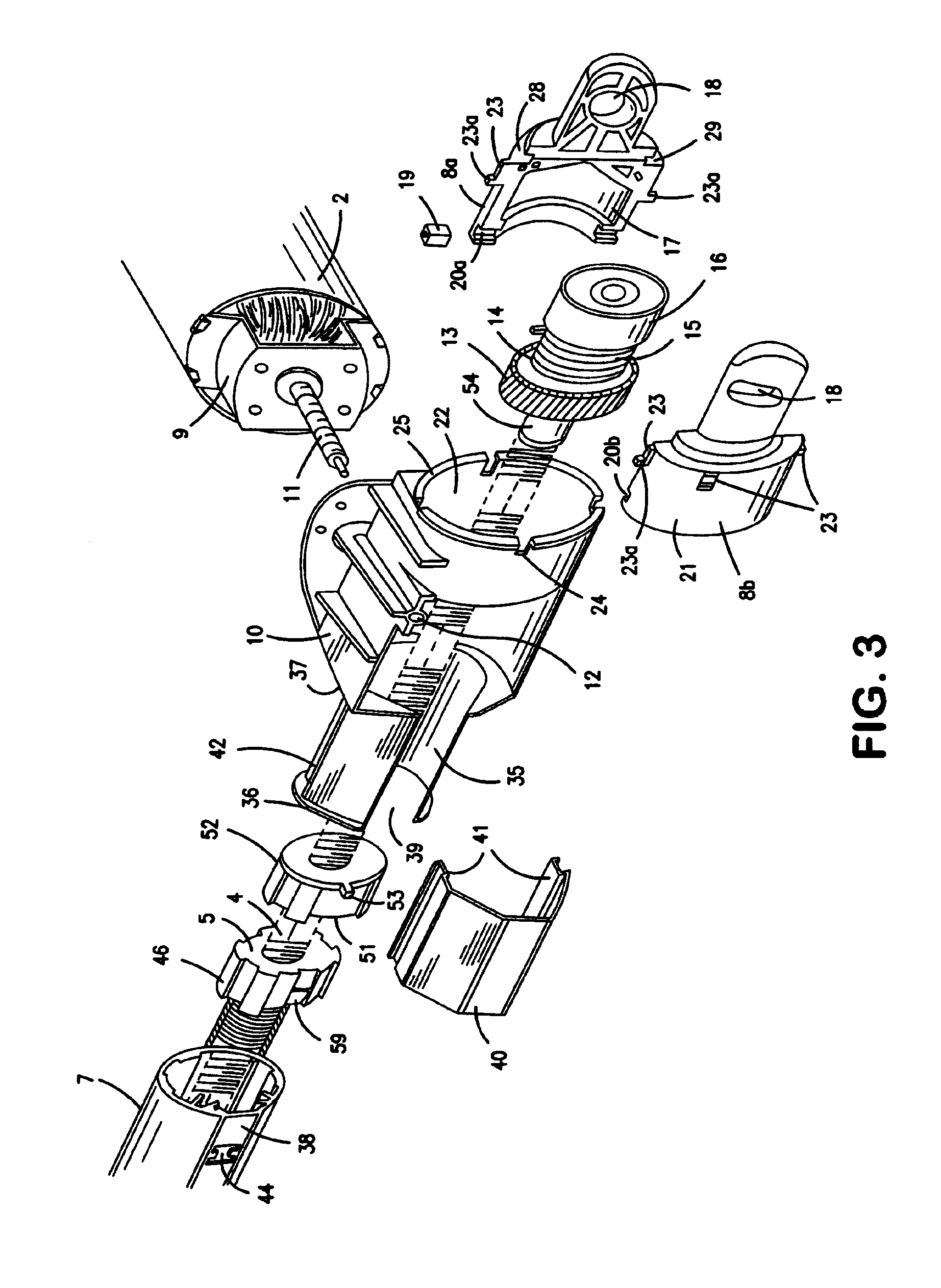Linear actuator
a linear actuator and actuator technology, applied in the direction of dynamo-electric machines, seating furniture, sheet joining, etc., can solve the problems of relatively expensive solution, relatively expensive solution, and large amount of plastic housing in the actuator price, and achieve the effect of simple moulding tools, reduced manufacturing costs, and reduced manufacturing costs
- Summary
- Abstract
- Description
- Claims
- Application Information
AI Technical Summary
Benefits of technology
Problems solved by technology
Method used
Image
Examples
Embodiment Construction
[0034]As shown in the drawings the main parts of the actuator are constituted by a two-piece housing 1, a motor 2 inside a housing part 1a, a worm drive 11, a spindle 4, a spindle nut 5, an activation rod 6, an outer tube 7 and a rear mounting 8.
[0035]The motor 2 is a reversible electric motor, typically a 24V or 48V DC-motor. The motor has a front cover 9, onto which a console 10 is fitted. The motor axle has an extended part formed as a worm 11, the free end of which is bedded in a journal bearing 12 molded in the console.
[0036]At the rear end of the spindle 4, a worm wheel 13 is fitted which engages the worm 11. The worm wheel 13 has on one side a cylindrical element 14 onto which a coil spring 15 rests to increase the self locking ability of the spindle, cf. EP 0 662 573 Linak. Hereafter comes a ball bearing 16 which is held in place, shaping the end of the spindle as a rivet head.
[0037]The ball bearing 16 is encapsulated in a recess 17 in the rear mounting 8, which consisting o...
PUM
 Login to View More
Login to View More Abstract
Description
Claims
Application Information
 Login to View More
Login to View More - R&D
- Intellectual Property
- Life Sciences
- Materials
- Tech Scout
- Unparalleled Data Quality
- Higher Quality Content
- 60% Fewer Hallucinations
Browse by: Latest US Patents, China's latest patents, Technical Efficacy Thesaurus, Application Domain, Technology Topic, Popular Technical Reports.
© 2025 PatSnap. All rights reserved.Legal|Privacy policy|Modern Slavery Act Transparency Statement|Sitemap|About US| Contact US: help@patsnap.com



